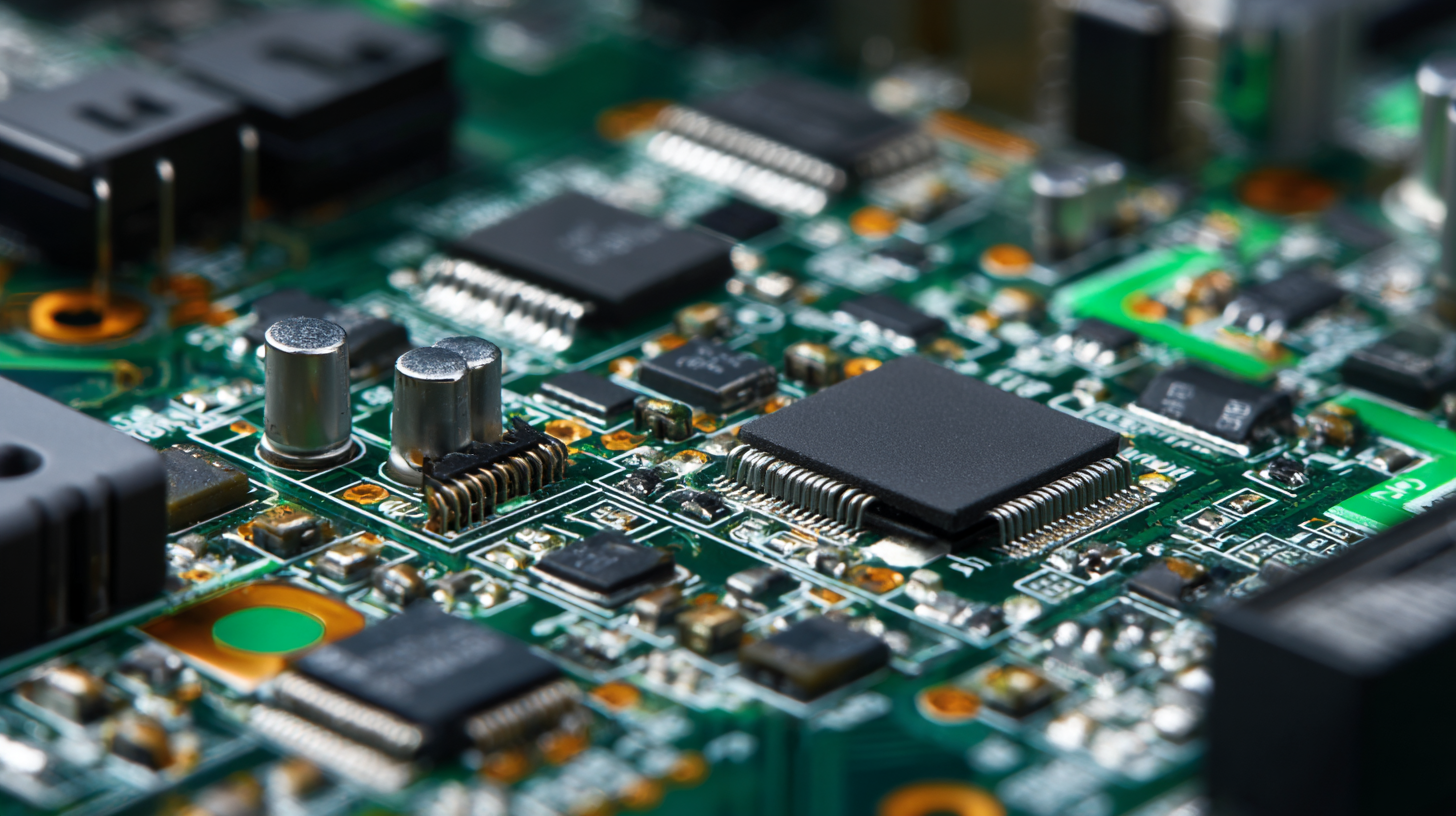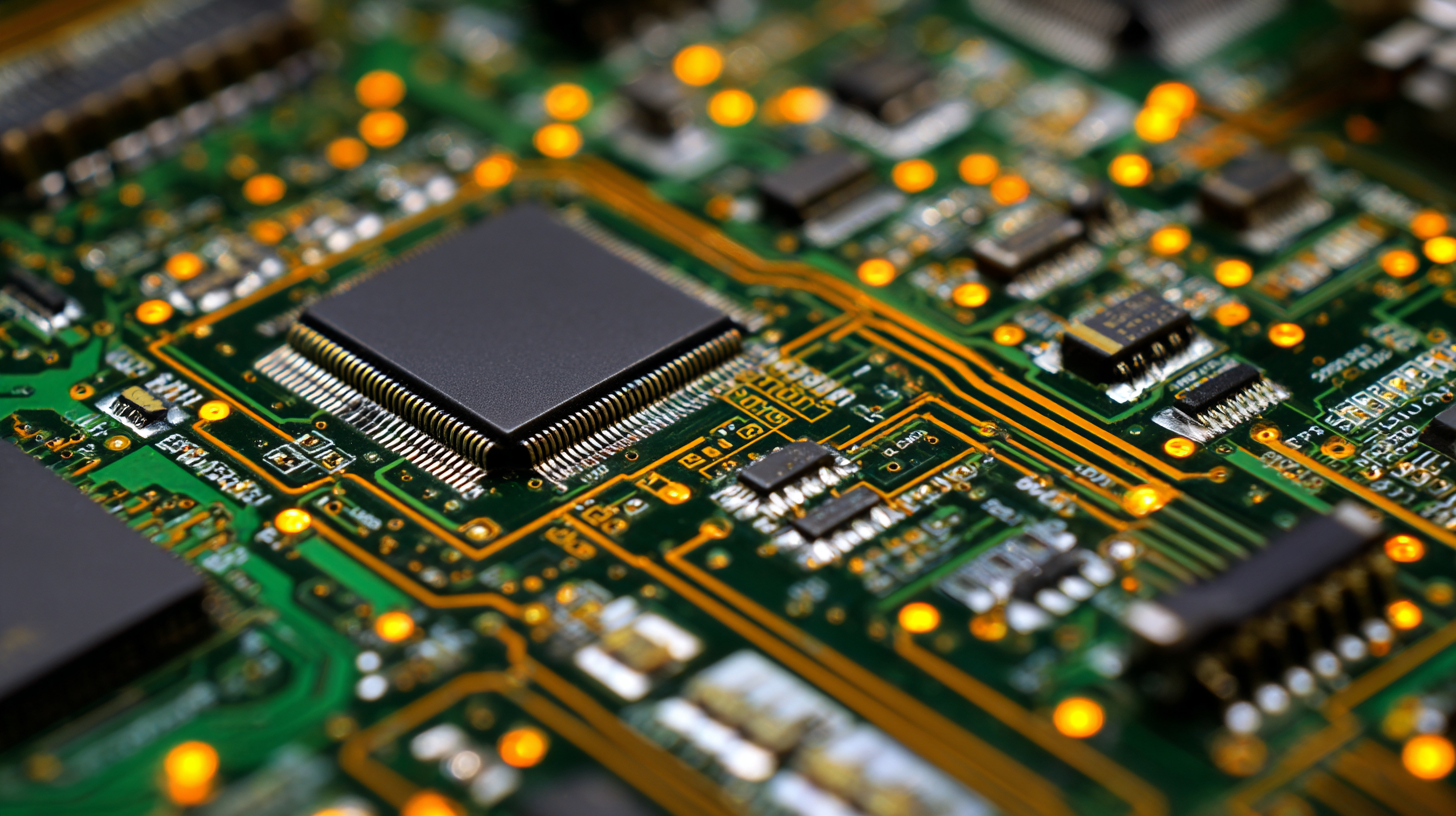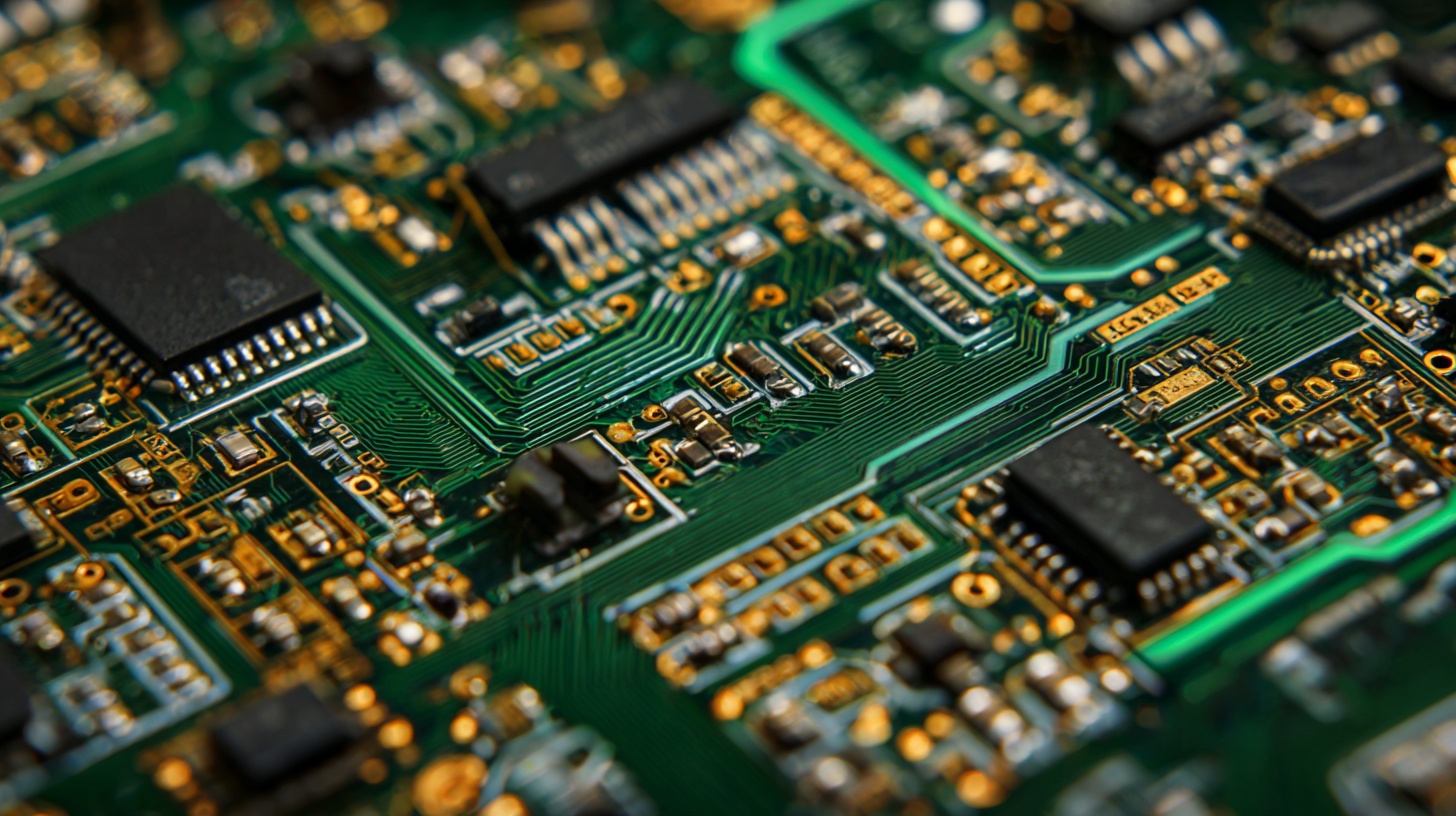Leave Your Message
The global market for Circuit Board Components is poised for significant evolution by 2025, driven by technological advancements and increasing demand across various sectors. As reported by industry analysts, the market is expected to grow at a compound annual growth rate (CAGR) of over 5% from 2021 to 2026, reaching approximately $60 billion by the end of this forecast period. Notably, China's dominance in manufacturing, being responsible for nearly 50% of the world's circuit board production, reflects its robust supply chains that support both domestic consumption and international exports.

Companies worldwide are keenly observing these trends, as innovations in materials and design techniques are set to redefine efficiency and performance in electronic devices. This blog aims to delve into the future trends and predictions for the circuit board components market, offering insights that underscore the interplay between global manufacturing capabilities and technological advancements.
As we move toward 2025, the landscape of circuit board components is being reshaped by emerging technologies that are redefining how engineers select and integrate these essential parts. The rise of IoT (Internet of Things) devices is driving the demand for smaller, more efficient components that can support advanced functionalities while maximizing space. This trend requires manufacturers to innovate continuously, ensuring their products are compatible with the latest trends in connectivity and automation.
Tip: When choosing components for your circuit board design, consider the impact of emerging technologies on your product's longevity and adaptability. For instance, opting for components that are easily upgradeable or that support multiple connectivity protocols can enhance your product's market viability over time.
Moreover, the growing emphasis on sustainability is influencing component selection. Engineers are now prioritizing eco-friendly materials and energy-efficient components to meet regulatory standards and consumer preferences. As a result, manufacturers are developing innovative solutions that offer both performance and a reduced environmental footprint.
Tip: Stay informed about the latest material advancements and sustainability certifications when sourcing your circuit board components. This can not only help meet compliance requirements but also appeal to environmentally conscious consumers.

As the electronics industry continues to evolve, understanding the key characteristics differentiating conventional circuit board components from advanced ones has become essential. Conventional components, such as through-hole resistors and electrolytic capacitors, have long been the backbone of electronic designs. However, their limitations in terms of size, efficiency, and performance are pushing manufacturers towards adopting advanced components like surface-mount devices (SMDs) and integrated circuits (ICs). According to a recent market analysis by Grand View Research, the global PCB market is expected to reach USD 80.8 billion by 2025, driven by the increasing demand for miniaturization and high-density interconnections.

Advanced circuit board components offer several advantages, including improved thermal performance and reduced power consumption. For instance, a report from Technavio indicates that the adoption of advanced materials like high-frequency laminates and embedded passive components can enhance signal integrity and reliability—factors that are critical for modern applications such as 5G technology, IoT devices, and AI systems. Furthermore, advanced manufacturing techniques, such as additive manufacturing and automated assembly processes, are revolutionizing the production landscape, allowing for unprecedented customization and rapid prototyping capabilities. As these trends gain momentum, the differentiation between conventional and advanced circuit board components will have significant implications for design engineers and manufacturers alike.
The global printed circuit board (PCB) market is on an impressive growth trajectory, set to increase from $69.69 billion in 2023 to a projected $113.49 billion by 2030. This upward trend is driven by soaring demand across various sectors, including automotive, electronics, and telecommunications. As the landscape evolves, specific applications are propelling different types of circuit board components to the forefront. For instance, the automotive PCB market alone is expected to grow from $9.15 billion in 2023 to $15.10 billion by 2032, reflecting a compound annual growth rate (CAGR) of 5.9%.
As the market expands, staying informed about emerging trends is crucial. One tip for businesses is to invest in advanced PCB design software, which is becoming increasingly essential due to rapid hardware innovation and the demand for compact designs. Furthermore, the adoption of substrate-like PCBs is also gaining momentum, with projections indicating a remarkable CAGR of 19.5% through 2034, as manufacturers strive for performance and miniaturization in their products.
Another important aspect to consider is the growing use of polytetrafluoroethylene (PTFE) in PCB production, anticipated to bolster the market’s capabilities. This material is expected to expand from a valuation of $4.07 billion in 2025 to $6.61 billion by 2034, underscoring the shift towards materials that enhance thermal stability and reduce signal loss.
| Component Type | Market Demand (Units) | Application Area | Growth Rate (%) |
|---|---|---|---|
| Resistors | 1,500,000 | Consumer Electronics | 5% |
| Capacitors | 2,000,000 | Telecommunications | 4.5% |
| Inductors | 800,000 | Automotive | 6% |
| Diodes | 1,200,000 | Industrial | 5.5% |
| Transistors | 1,000,000 | Healthcare | 7% |
The landscape of circuit board component manufacturing is undergoing significant transformation driven by sustainability trends that are reshaping industry standards. According to a recent report by MarketsandMarkets, the global market for eco-friendly electronic components is projected to reach $21 billion by 2025, growing at a compound annual growth rate (CAGR) of 10.5%. This surge is largely attributed to an increasing global emphasis on reducing electronic waste and enhancing energy efficiency. Manufacturers are now prioritizing the use of biodegradable materials and recyclable designs, which not only comply with tightening regulations but also appeal to environmentally conscious consumers.
Innovative technologies such as additive manufacturing and advanced materials are being embraced to further bolster sustainability efforts. A study from Deloitte highlights that adopting 3D printing in the circuit board sector can reduce material waste by up to 70%, which has substantial implications for cost savings and environmental impact. Additionally, companies are investing in sustainable sourcing practices, ensuring that components are made from ethically sourced materials. With these trends at the forefront, the circuit board components market is poised for a greener, more responsible future, aligning with global sustainability goals while optimizing manufacturing processes.
This chart illustrates the projected growth in different circuit board components by 2025, focusing on sustainability trends that are influencing the manufacturing process. The data reflects the increasing demand for eco-friendly materials and energy-efficient manufacturing practices.
As we look towards 2025, the landscape of circuit board component designs is poised for remarkable innovations. One of the most significant trends is miniaturization, driven by the demand for more compact and efficient electronics. Designers are increasingly focusing on creating smaller, yet more powerful components, allowing for greater functionality in limited spaces.
This trend is not just about size; it also encompasses enhanced performance metrics, such as improved heat dissipation and energy efficiency, which are crucial for modern applications such as IoT devices and wearable technology.
Another exciting advancement on the horizon is the integration of smart technology within circuit board components. The rise of the Internet of Things (IoT) necessitates components that can communicate and adapt intelligently to their environments. We expect to see an influx of circuit boards that incorporate sensors and microcontrollers that not only perform their traditional roles but also gather data and make real-time decisions.
This shift towards smart components will redefine the capabilities of electronic devices, enabling them to become more autonomous and user-friendly, significantly enhancing the overall user experience in various applications.
